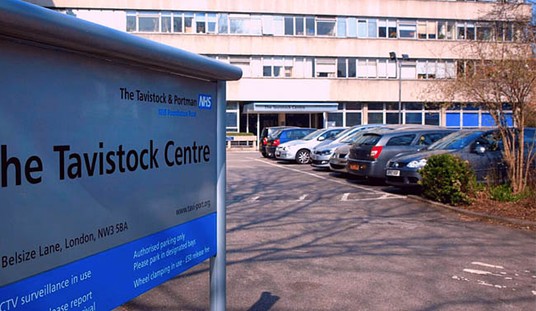Gallup’s mid-month report on national unemployment gives a mixed outlook on joblessness, which winds up being mainly negative. The surge in unemployment they found in September continued into October, but the number of long-term unemployed dropped slightly, as did part-time workers looking for full-time employment. They expect a bigger number for the jobless rate on November 5th from the Department of Labor, perhaps into double digits:
Unemployment, as measured by Gallup without seasonal adjustment, is at 10.0% in mid-October — essentially the same as the 10.1% at the end of September but up sharply from 9.4% in mid-September and 9.3% at the end of August. This mid-month measurement confirms the late September surge in joblessness that should be reflected by the government’s Nov. 5 unemployment report. …
The decline in part-time workers wanting full-time work has led to a situation in which underemployment is declining even as unemployment is increasing. The 18.6% mid-October underemployment figure (the sum of the 10.0% unemployed and the 8.6% employed part time but wanting full-time work) is down slightly from 18.8% at the end of September and is the same as the reading in the middle of last month. …
In this regard, Gallup modeling suggests the government’s unemployment rate report for October will be in the 9.7% to 9.9% range when it is released Nov. 5. The government’s last report showed the U.S. unemployment rate at 9.6% in September on a seasonally adjusted basis, as Gallup anticipated. In addition to seasonal adjustments, the official unemployment rate is likely to be held down by a continued exodus of people from the workforce. It is easy for potential workers to become discouraged when the unemployment rate is expected to remain above 9% through the end of 2011.
Even the good news about the decline of underemployment is suspect, Gallup notes. Because the topline unemployment figures keep rising, it appears that the decrease isn’t coming from part-timers finding full-time jobs. Instead, they could be losing their jobs and dropping out of the workforce figures.
This will have little impact on the upcoming elections, of course, and for a couple of reasons. First, the Gallup poll won’t get a whole lot of attention, even though it has shown to be a fairly reasonable indicator of overall results. Second, the kind of unemployment the poll projects is close enough to already-known results to give it only a limited impact on midterm races and perceptions of the Obama administration’s economic policies. Moving back to double digits might have more impact on electorate psychology, but that expectation may already be baked into the midterm cake. And, of course, the actual DoL report won’t come out until three day after the election anyway.
Still, it’s worth keeping a close eye on the Gallup indicators as we move closer to the holiday season. Gallup does not adjust figures for seasonal demand, which means that we should see an increase in employment soon if retailers expect to see a decent Christmas shopping season. Some are predicting a mildly better season this year in both spending and employment:
Retailers are expected to add between 550,000 and 650,000 jobs nationally this holiday season, according to a forecast from the national outplacement firmChallenger, Gray and Christmas.
That’s more than the 501,400 added last year, but it’s still well below the 720,800 added in 2007, just as the recession was beginning.
Most of that will come at large retailers, though. Small businesses won’t be hiring, but may expand hours for existing staff instead:
Much of the holiday hiring is taking place at national chains including Macy’s, Kohl’s and Toys R Us. Some smaller local retailers say they won’t be adding any more workers but could give current employees more hours.
That follows from better-than-expected retail numbers from September, announced last week. It’s not recovery levels, but it’s better than the direction those indicators had been heading over most of the year.







Join the conversation as a VIP Member